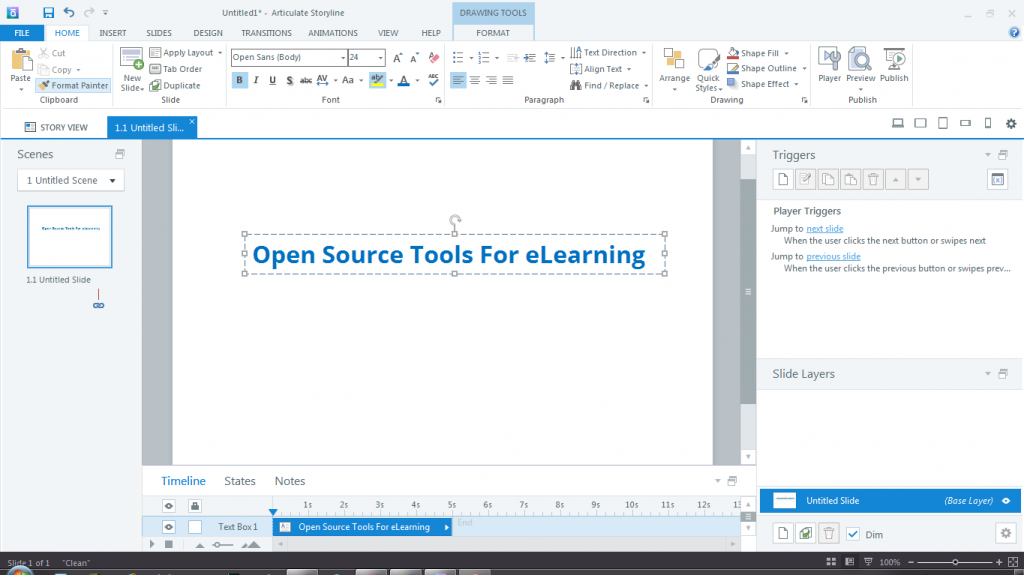H5P is an HTML5 content authoring tool that allows you to create, share and reuse interactive HTML5 content that can be accessed across multiple devices. With H5P, you can create and edit interactive videos, presentations, games, advertisements and more.It has a number of inbuilt libraries that you can use to author and add interactivity to your content. It has a shallow learning curve and all you need to get started is a browser and H5P compatible CMS or LMS. Currently, H5P is available for WordPress, Moodle and Drupal. It’s open source and completely free to use.
Adapt is a free e-learning authoring tool that creates fully responsive, multi-device, HTML5 e-learning content using the Adapt developer Framework. The tool is accessed via a web browser and no programming experience is needed to author the eLearning courses. With this tool you can create interactive HTML5 and SCORM compliant content that can be tracked using your LMS. This tool may however require some technical knowledge to get set it up for the first time.
This is a server-based suite of tools for content authors. It allows eLearning content developers to quickly and easily develop SCORM compliant content using browser-based tools, with no programming required. Xerte Online Toolkits is aimed at content authors, who will assemble content using simple wizards. Xerte Online Toolkits allows Content developers to easily collaborate on projects and its functionality can be extended using Xerte.
This is an open source online education platform developed by Google that helps you create your online class. It’s more suitable for creating educational content for education institutions. I has a rich feature set that which you can use to add instruction, assessments and other activities to your online course.
The Multimedia Learning Object Authoring Tool
The Multimedia Learning Object Authoring Tool enables content experts to easily combine video, audio, images and texts into one synchronized learning object. All assets are configured to be played back in a pre-configured order. Users do not need to perform any programming tasks, but rather going through a graphical user interface to generate the learning object.

